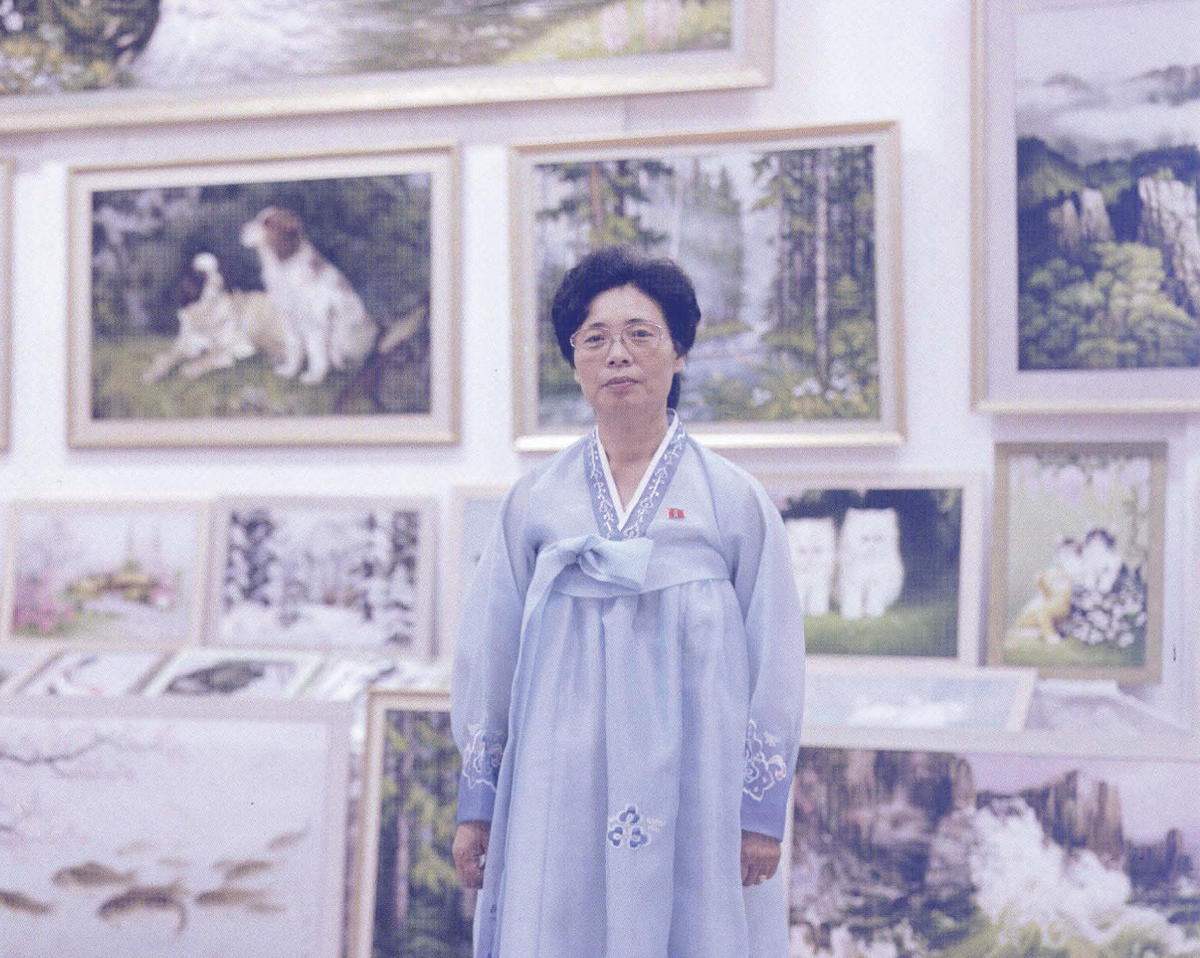
“Mrs Li Wol Sun is the highest Merited Artist in embroidery, and she has more than thirty years of work at the Embroidery Institute. She is Artist Number Two grade, which is the best rank. There is a Number One rank, but no one has ever reached it because of the eyestrain — one of the dangers of doing too much stitching.”
— Charlie Crane, Welcome to Pyongyang
BAHA’I
In 1863, the Baha’u’llah, née Mirza Husayn Ali Nuri, founded the Baha’i faith. The name derives from bahá, the Arabic word for “splendor” or “glory.” The Baha’u’llah preached the fundamental unity of God, humanity, and religion, maintaining that he himself, as “Glory of God,” was the fulfillment of at least six great eschatologies. He was the first coming of the Jewish Messiah and the second coming of the Christian Jesus; the revelation of the occulted Third Imam, Imam Husayn; as well as the occulted Isa, the Muslim Jesus. And closer to home — Bahaism was born in Persia —he was the return of Shah Bahram Varjavand, the Zoroastrian messiah, as well as the Manifestation prophesied by his teacher, Mirza Ali Muhammad, the founder in 1844 of another worldly religion, Babism.
CAPITAL
One of the more dramatic events of the War of 1812 transpired in 1814, on the moist evening of August 24, when British forces took the American capital of Washington, DC, and proceeded to burn down the major landmarks, including the Treasury Building and the White House.
One of the last to leave the White House was Dolley Madison, wife of President James Madison, who stayed behind to collect sundry treasures, including a full-length portrait of George Washington by Gilbert Stuart, the artist whose Unfinished Portrait is the basis of the image on the one-dollar bill.
The British soldiers who took the White House discovered a banquet set for forty in the main dining hall. They proceeded to sit down to dinner and take souvenirs from the building before setting it on fire.
The flames were said to be visible from Baltimore, thirty-odd miles away. On August 25, 1814, a hurricane struck the Eastern Seaboard of the United States. A brutal tornado tore through Washington, ransacking the British forces and putting out the remaining fires. The British were forced to retreat to their warships, and the occupation of Washington, begun the day before, was over.
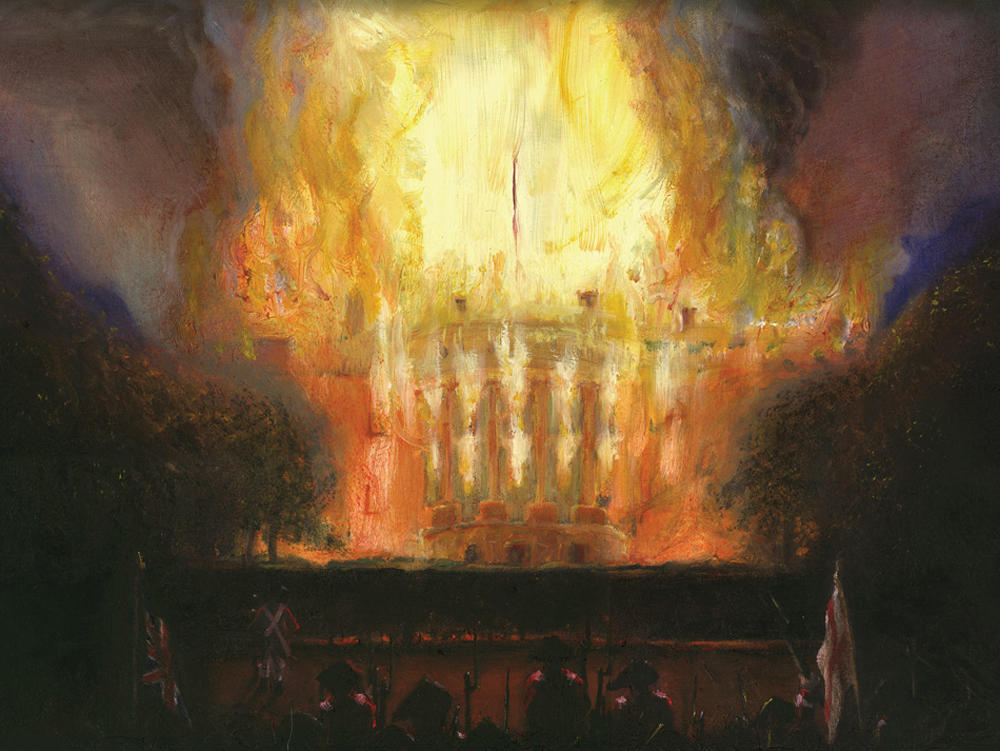
CHRISM, CHRISMARIUM, CHRIST
Literally “an anointing” in Greek, chrism is consecrated oil, usually from the fruit of the olive tree, used to represent the presence of the Holy Spirit among Greek Orthodox and Roman Catholics. Sometimes the chrism is stored in a special globe-shaped silver jar called a chrismarium. The words derive from the Greek word chrio, meaning “to smear with oil or grease,” as does the word Christ, “anointed one.”

FIRST
In 301 AD, Armenia became the first Christian nation. In the wake of a series of wars against the Persian Empire, King Tirdat of Armenia became increasingly brutal in his persecution of the growing Christian movement. Saint Hripsime, a teenaged virgin who spurned his advances, was put to death, while Gregory, Tirdat’s first cousin and an influential Christian convert, spent fourteen years in a deep pit on the Ararat Plain. One day King Tirdat, subject to violent lycanthropic urges, followed his sister’s counsel and released Gregory from the pit. Gregory, called the Illuminator, restored the monarch’s health and sanity, then baptized him. The following year Gregory became patriarch of the new Armenian Apostalic Church. Today Gregory’s head resides in Rome, his right hand at Echmiadzin in Armenia, and his left in Antelias, Lebanon.
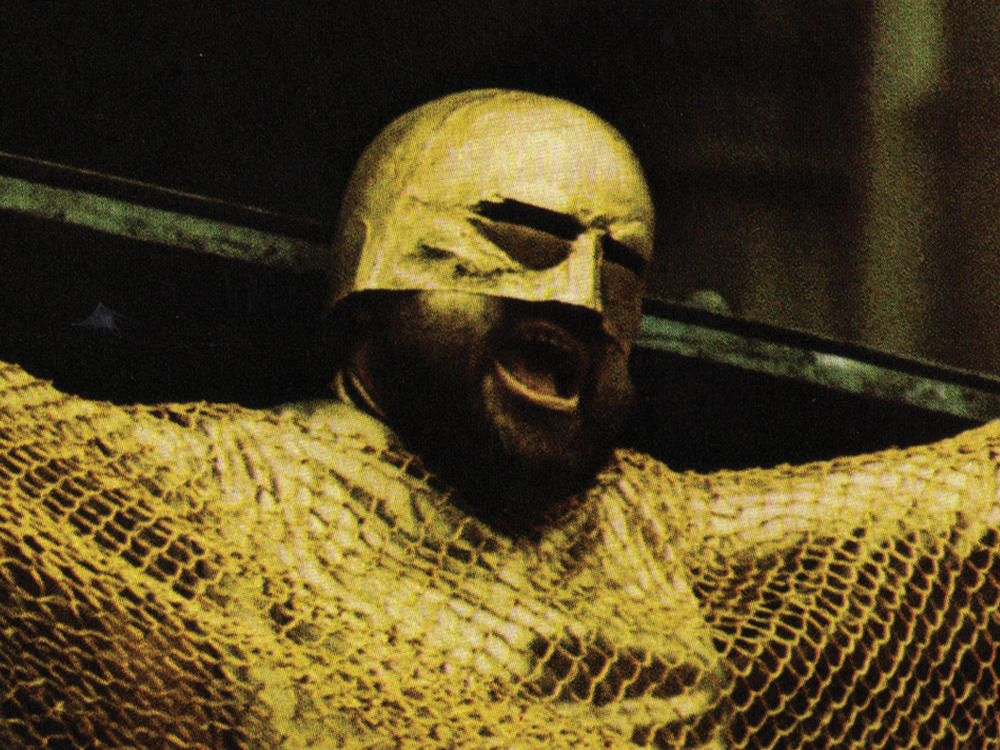
GOLD
In 1972, the women of Sipche, Nepal, poisoned all the men in their village on the theory that if they killed one hundred men, the hundredth would turn to gold and make them rich.

HALO
“There are circular phenomena of light in drops or bubbles of water and in ice crystals which by the refraction of light reveal in greater or less degree the spectral colors….the curious rings of light or color similar to the above, which often form themselves before the iris of the eye even in candlelight, [and] are more gorgeous on the mountain mist…If the beholder has the sun behind him; they surround his shadow as it is projected upon the clouds….Occasionally one even sees the planet Venus veiled by a disc of light. The phenomena of discs and broad rings are more usual in the sun and moon. The Babylonians studied them diligently…. The terminology of these phenomena is vague. The disc or circle around the sun can be correctly called ‘anthelia,’ and the ring around the moon ‘halo.’ A more usual name is ‘aureole,’ which in a restricted sense means an oval or elliptical ray of light like a medallion. If the brightness is merely a luminous glow without definitely forming a ring, circle, or ellipse, it is usually spoken of as a ‘glory.’ The types in nature in which rays or beams of light with or without color challenge attention, suggested the symbolical use of the nimbus to denote high dignity or power. It is thus that Divine characteristics and the loftiest types of humanity were denoted by the nimbus.”
—“Nimbus,” G. Gietmann, The Catholic Encyclopedia Vol XI, 1911.
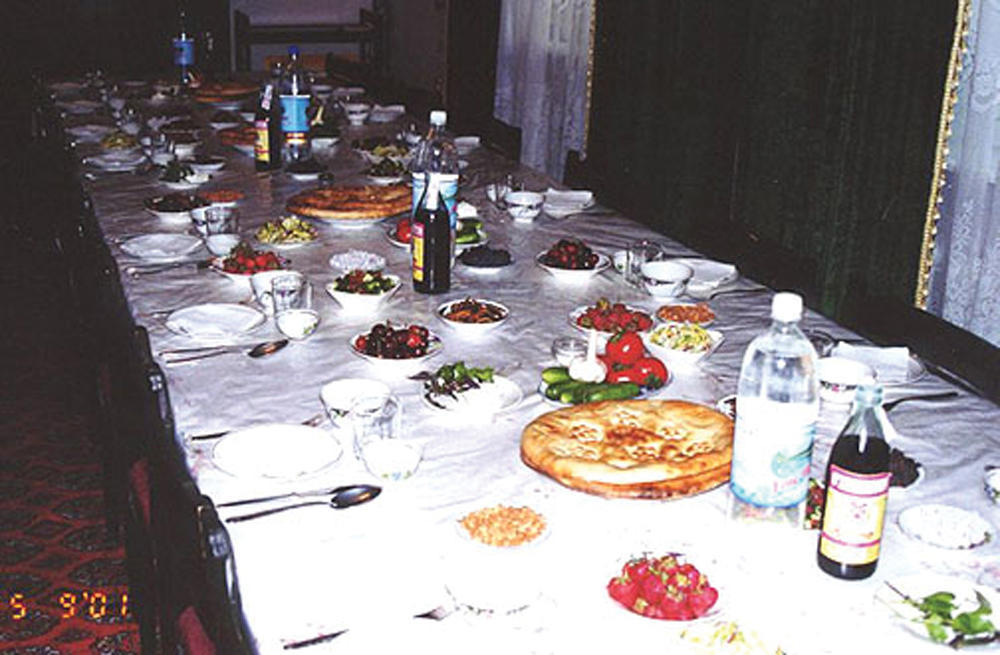
HERO OF THE SOVIET UNION (A TYPICAL LUNCH, IN THE PRIVATE HOME, OF A)
Established by personal directive of Stalin in 1934, “Hero of the Soviet Union” was the highest distinction given by the USSR. Recipients of one commendation were given a medal and a complementary enrollment in the Order of Lenin. Recipients of two awards were entitled to a commemorative bronze bust of his or her likeness, as well as an inscription in the hero’s hometown. Three-time recipients — the highest possible number, by Stalin’s writ — were entitled to have their bust erected on a pedestal in Moscow near the Palace of Soviets, though the Palace was never built. Marshall George Zhukov and General Secretary Leonid Brezhnev received four commendations each.
The first Heroes were the pilots who rescued the crew of the steamship Cheliuskin, which was crushed by Arctic ice fields in 1934.
The final recipient was a Soviet diver, Captain of the Third Rank Leonid Mikhailovich Solodkov, who received the award for the performance of a “special diving task” on December 24, 1991. The USSR dissolved itself by act of parliament two days later.
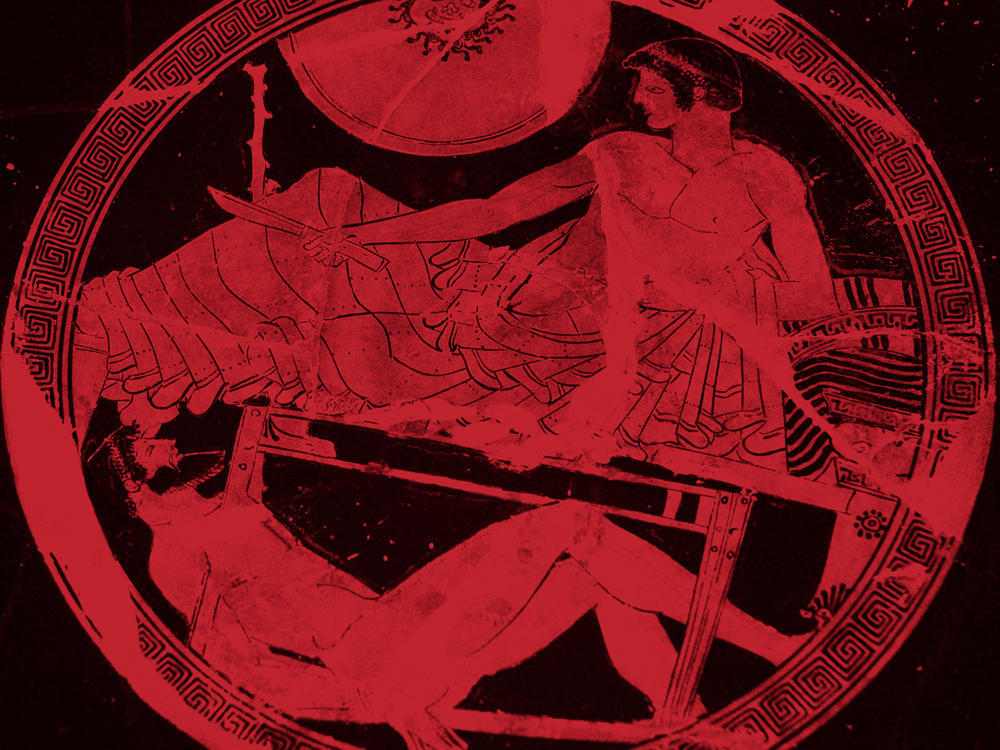
HIGH NOON
“Destroy us in daylight, as it is your pleasure to see us destroyed!” So pleads the giant Ajax, strongest of the Achaeans, in the seventeenth book of the Illiad. As his forces fell to the Trojan onslaught, Ajax addressed himself to Zeus, king of the gods and architect of the Trojan war. For a culture in which the afterlife was an infinite, murky gloom, death in the daylight, in plain view of your comrades, was among the greatest glories.
Alas, Zeus heard Ajax’s prayer, and the Achaeans prevailed. Ajax died later, after the war, gone mad with grief and envy after a quarrel with Odysseus. A killer of sheep, Ajax took his own life.
Glory in Homeric Greek is kleos: honor, fame, celebrity. It derives from the verb kleio, “to tell of, sing, or celebrate.” But it also related to klazdo, “to wail or cry out,” and klaio, “to wail, lament, or mourn.” When we speak of going out in a blaze of glory, we are speaking after Homer.
HONEY
The use of honey as food and drink predates the development of agriculture. The Pharaohs of Upper Egypt made the Bee a royal symbol. The Egyptians kept bees for both their honey and their wax. Both were used in the embalming process. Upon leaving Egypt, the Jews wandered for forty days and nights in search of a land of milk and honey. Ancient sources describe the bees of Palestine as particularly fierce.
According to a Talmudic source, King Herod of Jerusalem had his beloved wife Mariamne entombed in honey after she was tried and executed for her role in a royal intrigue.
The sixteenth century Chinese doctor and writer Li Shizhen, quoting another Chinese source, and noting that the priests in Burma were known to preserve their leaders in honey-filled coffins, said: “In Arabia there are men seventy to eighty years old who are willing to give their bodies to save others. The subject does not eat food, he only bathes and partakes of honey. After a month he only excretes honey (the urine and feces are entirely honey) and death follows. His fellow men place him in a stone coffin full of honey in which he macerates. The date is put upon the coffin giving the year and month. After a hundred years the seals are removed. A confection is formed which is used for the treatment of broken and wounded limbs. A small amount taken internally will immediately cure the complaint. It is scarce in Arabia where it is called mollified man.”
—quoted in Bernard E. Read, Chinese Materia Medica: (5) Animal Drugs, 1931.
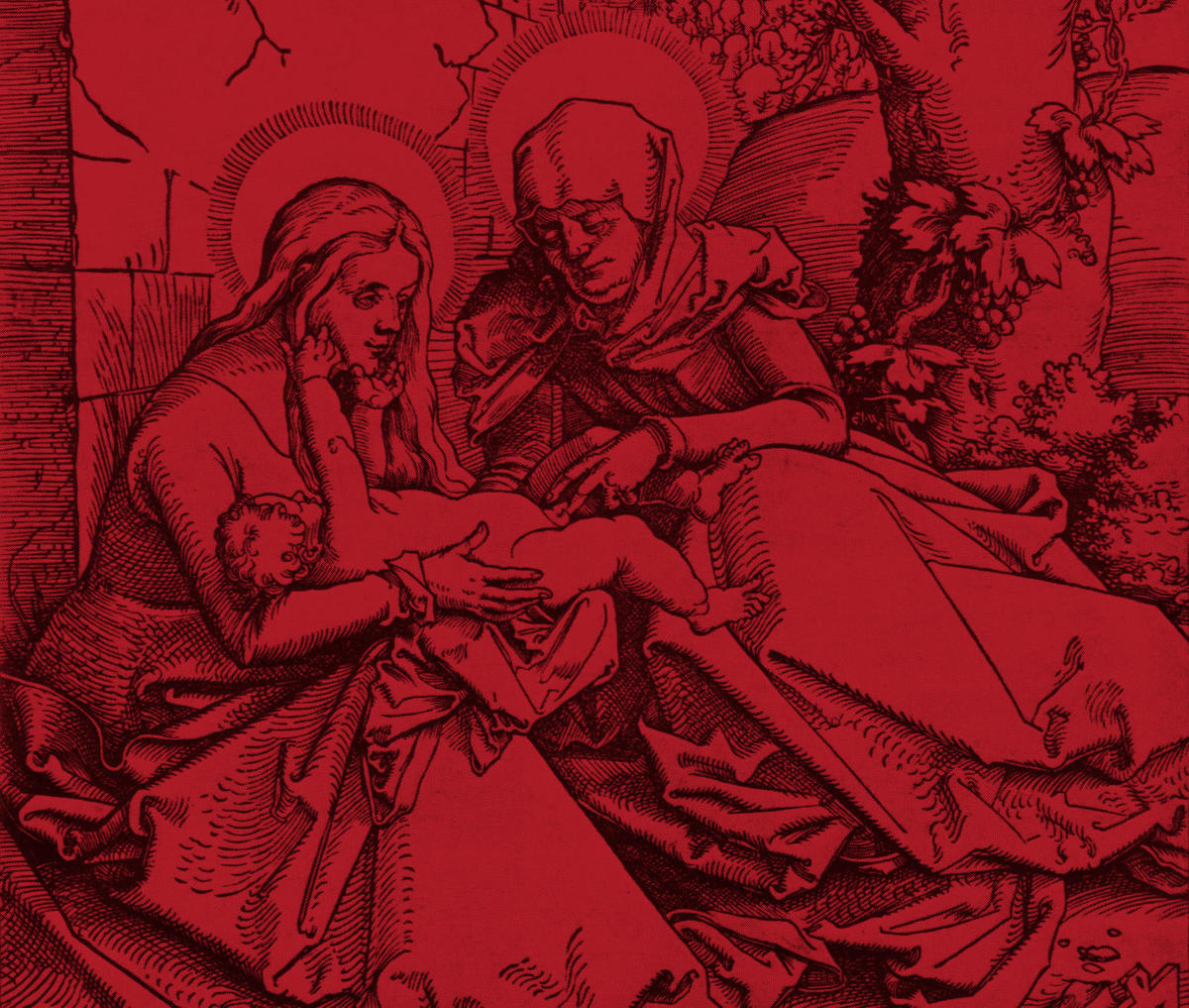
INCARNATION
“The presentation centers on an ostensive act, a palpable proof — proving nothing less than what the Creed itself puts at the center: God’s descent into manhood. And because grandmother Anne guarantee’s Christ’s human lineage, it is she who is tasked with the proving. Her gesture is remarkable not only for its intamacy, but for its integration in a close-knit symbolic system. Observe that while the Child’s lower body concedes its humanity, the arms reach for the Virgin.”
—Leo Steinberg, The Sexuality of Christ in Renaissance Art and in Modern Oblivion, 1983
LIKENESS
The monument at Mount Rushmore was completed between 1927 and 1941. The sculptor was Gutzon Borglum, a Danish-American artist from Idaho — the child of a plural Mormon marriage — who had studied in Paris and was heavily influenced by Auguste Rodin. Over a hundred of his statues populate the Cathedral of Saint John the Divine in New York, and he was the first living artist to sell a sculpture to the Metropolitan Museum. Borglum was one of the organizers of the 1913 Armory Show in New York, though he resigned from the organizing committee before the opening, dismayed that the focus on modern art made his own highly figural work seem behind the times.
Between 1917 and 1925 Borglum was the lead designer for a monumental project at Stone Mountain, Georgia, inaugurated by the United Daughters of the Confederacy: a colossal high-relief sculpture of Robert E Lee, Stonewall Jackson, and Jefferson Davis on horseback, leading a contingent of Confederate troops. Borglum, a fervent patriot who worried that the great American monuments had been built by foreigners, was also an active member of the Ku Klux Klan.
During his work on the Confederate monument, Borglum developed a gigantic magic lantern — an ancestor of the slide projector — with which to trace his designs onto the side of the mountain.His Stone Mountain project was never completed.
Borglum himself chose the four American presidents for Rushmore — Washington, Jefferson, Lincoln, and Theodore Roosevelt — for their roles in defending and expanding the territory of the United States. The original design involved mammoth head-to-waist sculptures of the four men, but the money was not forthcoming, and Borglum died of a brain embolism in 1941. His son Lincoln Borglum completed the task and served as the first superintendent of the Mount Rushmore National Memorial…
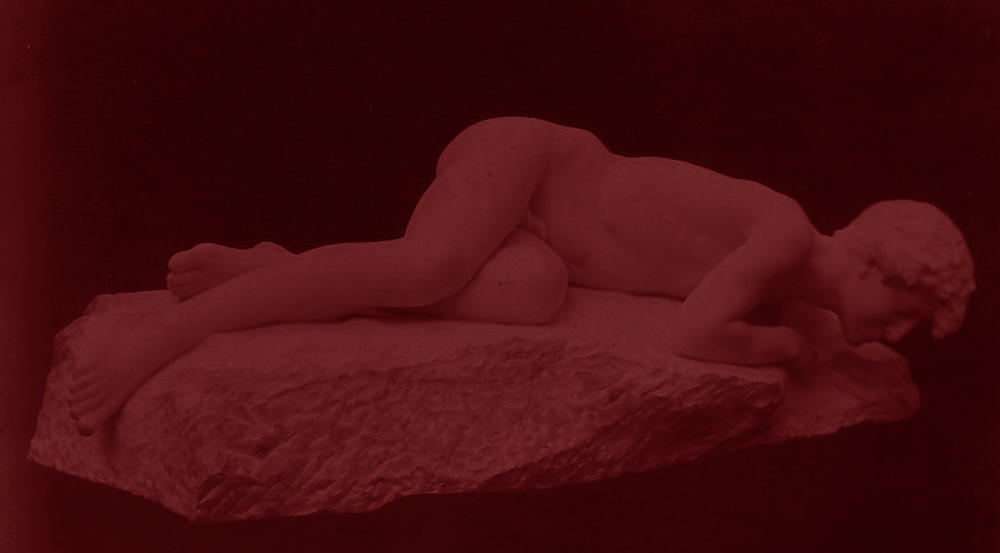
NARCISSISM
“The Philadelphia Art Commission declined to accept Sylvester Stallone’s donation of an eight-and-a-half-foot statue of himself, offered on the condition that it stand at the top of the steps outside the Philadelphia Museum of Art.”
—Bad News: The Best of Esquire Magazine’s Dubious Achievements, 1984
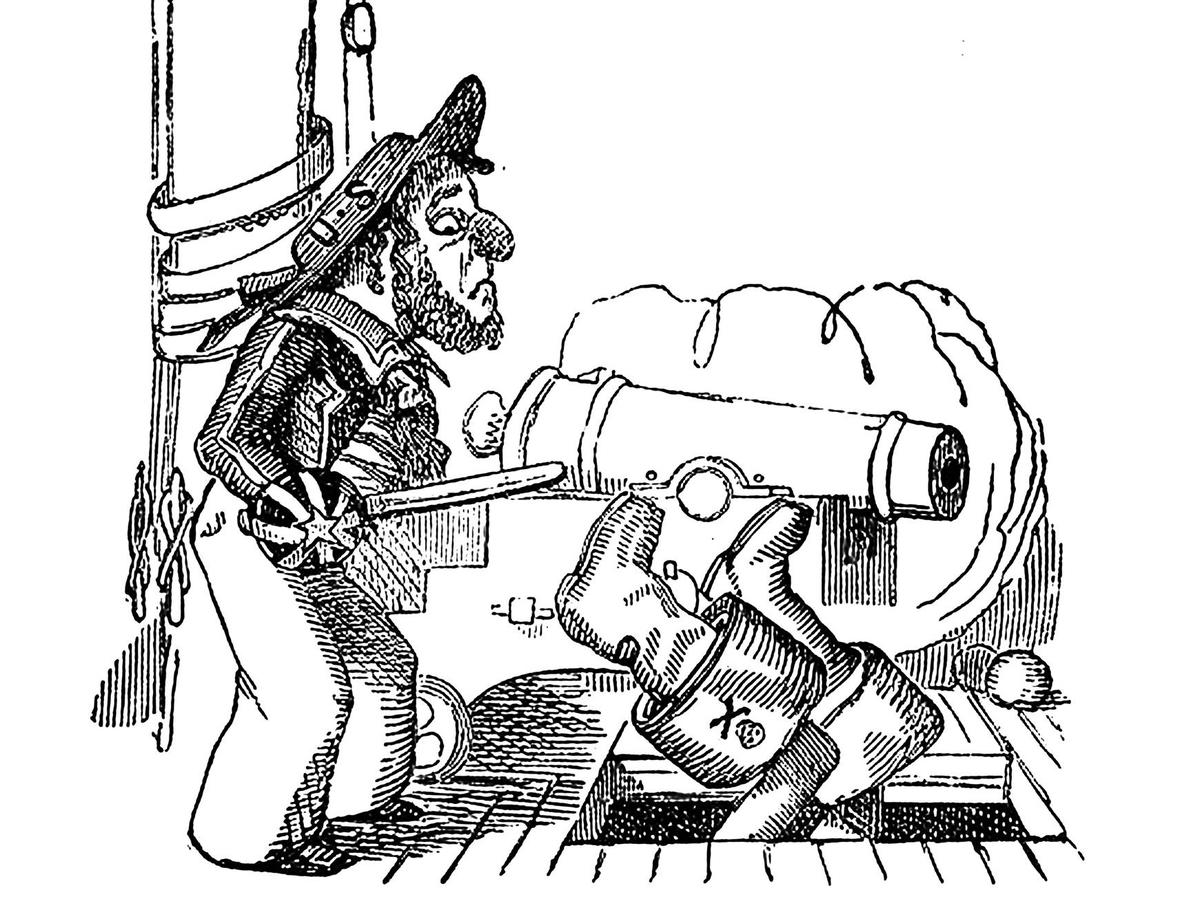
PIRACY
Shortly after the inauguration of Thomas Jefferson as third president of the United States in 1801, the Pasha of Tripoli demanded $225,000 in tribute. It was not an unreasonable request; the US had been paying ransom to the Barbary states of North Africa since 1783, as much as one million dollars a year. But Jefferson had long opposed the practice, and soon American frigates were on their way to the Mediterranean. In the first naval encounter of the undeclared war — the first foreign engagement of the new United States — the USS Enterprise defeated the Tripoli on August 1, 1801.
The leadership of the Barbary states — Algiers, Morocco, Tunis, and Tripolitania —were ostensibly vassals of the Ottoman Turks, and their attacks on ships and cities throughout the Atlantic and Mediterranean were legendary (as were their enemies, including the Christian Knights of Malta, who opposed the Barbary pirates until 1798, when their order was betrayed by Napoleon). Thousands of Europeans were enslaved in corsair raids on the coasts, including many renegados, slaves who converted to Islam and embraced the freedom of life at sea, unaffiliated with a sovereign power.
The turning point in the war was the Battle of Derne, the first land battle of the American Marines, which would later be memorialized in the opening lines of the Marine Hymn: “From the halls of Montezuma to the shores of Tripoli.” A peace treaty was signed in July of 1805, though the resumption of anti-American piracy a few years later would lead to a second, more decisive Barbary War in 1815.
PROGENY
Founder of the Mongol Empire, uniter of the Mongol people, and architect of the Pax Mongolia, Genghis Khan is survived by sixteen million male descendents.
SHINING HORSES
681 AD: The Glory of Khan is a three-part, five-and-a-half hour film commemorating the defeat of the Byzantines and the founding of the medieval Bulgarian Empire by Asparukh Khan, on the occasion of Bulgaria’s 1300th anniversary. 681 AD was directed by Liudmil Staikov, a Bulgarian cineaste who specialized in historical dramas. His final film, Vreme na nasilie (1988), depicted heroic acts of Bulgarian resistance against the Ottoman jihad—a group of Janissaries led by the ruthless convert Karaibrahim.The cast of 681 AD: The Glory of Khan is said to have included fifty thousand extras. The name Asparukh is Persian and means “he who has shining horses.”
SPACE
On April 12, 1961, Hero of the Soviet Union Yuri Gagarin became the first human to circle the globe from space. “I don’t see any god up here,” he is said to have said.
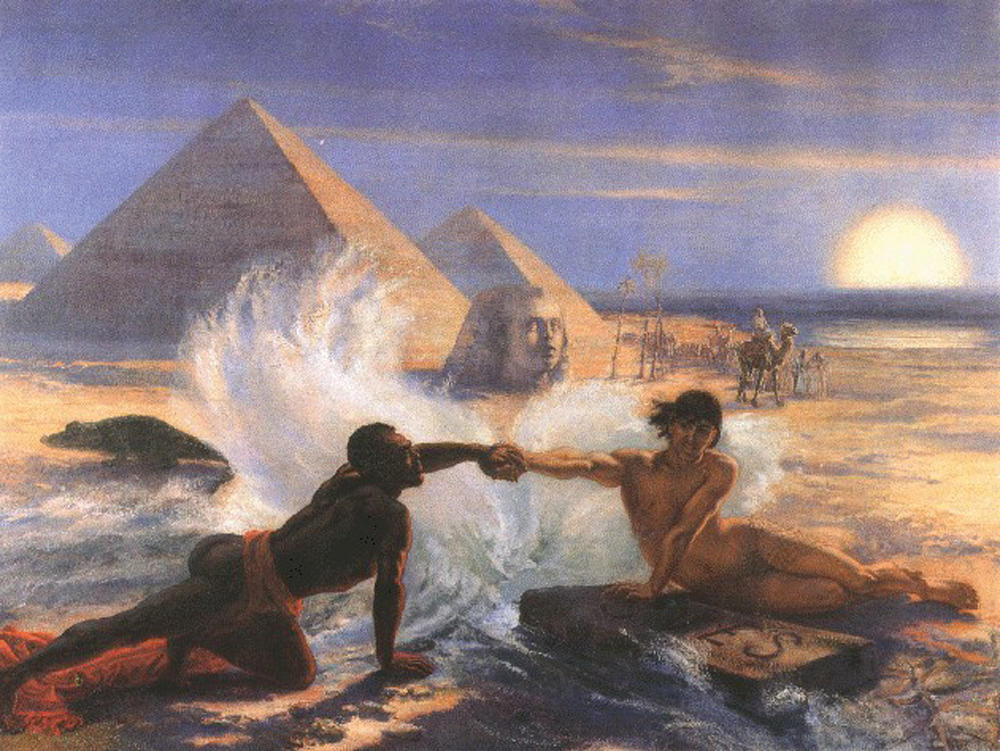
SUEZ CANAL
The Assembly Hall of Lviv Polytechnic National University in Lviv, Ukraine, features eleven images created in the 1880s by the famed Polish artist Jan Matejko. Small compositional sketches were enlarged into appropriately scaled oil paintings by masters of the Krakow Fine Arts School under Matejko’s supervision. The series allegorized the evolution of human thought and action under the rubric “Triumph of Progress.”
The eleventh painting, Suez Canal, represents the end of the line: “Human mind and will, scientific and technological progress, can alter the face of the planet. The picture expresses the idea of connecting Egypt and Asia by means of the Suez Canal. The beauty on the right personifies Asia; the one on the left is for Egypt. Their handshake symbolizes common interests, international contacts, union of races, and continents. The perfidious and malicious crocodile is driven by the Suez Canal [and] waves away into the desert. It means that the forces of good, reason, and creative work of man are gaining victory. And the sun is rising in the east as a sign of this victory.”
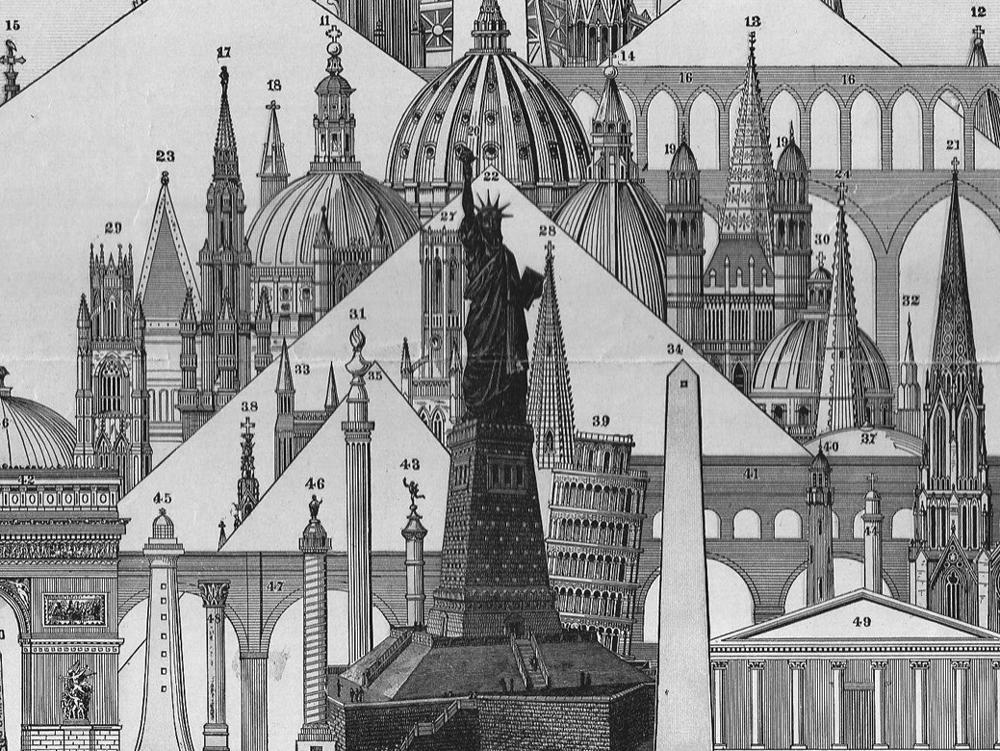
TALLEST (HOTEL)
In 1987, the Democratic People’s Republic of Korea began work on Ryugyong Hotel, a massive 105-story building with more than 3,000 rooms. It would be one of the only functional structures with more than 100 floors in the world, rivaling the Empire State Building and the former World Trade Center in New York and the Sears Tower in Chicago. The whole propaganda apparatus of the North Korean state heralded what was to become the world’s tallest hotel.
But the project was apparently abandoned at an advanced stage of completion sometime in 1992. Western funding sources had not materialized, even as famine began to threaten the populace. It was rumored that there were fundamental flaws in the building’s design; even the quality of the concrete was said to be compromised. The regime became intensively secretive about the Ryugyong Hotel. Where publicity photos from the project’s heyday had been manipulated to show the building as completed and brightly lit (even during periods of electrical blackout), the abandoned building disappeared from official maps. Guides chaperoning guests through the DPRK professed ignorance as to the location of this obscure building, though the ruin, then as now, dominates the Pyongyang skyline. In 1994, construction began on the Burj Al Arab, a proposed hotel on an artificial island off the coast of Dubai. The engineering challenge of building required 234-meter-long piles of concrete to be sunk into the sand. The 180-meter atrium had to be refrigerated during construction to prevent the formation of rain clouds inside the structure. Completed in 1999, the Burj Al Arab Hotel was unambiguously the world’s tallest.
In 2001, however, architects from the Council On Tall Buildings and Urban Habitat (CTBUH) were able to gauge for the first time the accurate height of the Ryugyong Hotel: 330 meters. The Burj Al Arab was only 321 meters. The ghostly hotel of Pyongyang, “the capital of willows,” was once again the tallest inhabitable space in the world.